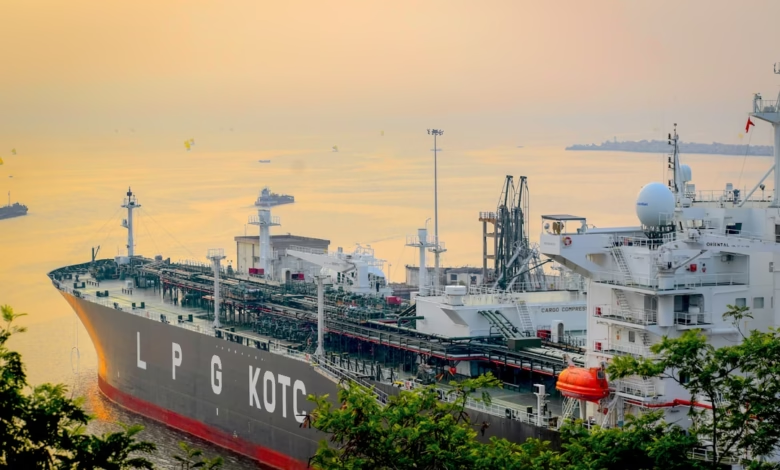Global Oil Trade Unveiled: Key Exporters, Strategic Trade Routes, and Economic Impact on Oil Prices and National Development

The global oil trade stands at the center of international commerce, shaping economies and influencing global politics like few other industries. As crude oil remains a primary source of energy for countries both developed and emerging, understanding the intricate dynamics of oil production, oil transportation, and market flows is essential for policymakers, investors, and businesses worldwide. From the sprawling oil reserves of OPEC nations to the surge in shale oil and offshore drilling activities, the international exchange of oil involves a complex web of trade routes, refining hubs, and strategic supply chains. These flows not only determine global oil prices and set key oil market trends, but also affect energy security, downstream oil industries, and national economic development. In this article, we will map the current global oil trade, highlighting major exporters, importers, and pivotal supply chains; analyze how oil transportation routes impact oil price volatility, geopolitics, and energy security; and explore the broader economic consequences of crude oil flows—including shifts toward oil alternatives like biofuels and the evolving environmental impact of oil consumption. Whether you are interested in oil investing, the future of oil technologies, or the role of oil regulation and compliance in the market, this comprehensive examination offers fresh insights into a rapidly changing energy landscape.
- 1. Mapping the Global Oil Trade: Key Exporters, Importers, and Strategic Oil Supply Chains
- 2. How Oil Transportation and Trade Routes Shape Oil Prices, Energy Security, and Geopolitics
- 3. Economic Impact of Crude Oil Flows: National Development, Oil Market Trends, and Alternative Energy Futures
1. Mapping the Global Oil Trade: Key Exporters, Importers, and Strategic Oil Supply Chains
The global oil trade is a complex network that connects countries with abundant oil reserves to those with high oil consumption, shaping the foundation of international energy security and economic stability. Major exporters like Saudi Arabia, Russia, the United States, and members of OPEC play crucial roles in setting oil market trends, as their production capacity and export volumes directly impact global oil prices and market volatility. Recent developments in shale oil extraction and offshore drilling technologies have transformed traditional supply dynamics, allowing countries like the US and Brazil to emerge as significant players in both crude oil production and oil exporting.
On the demand side, leading importers such as China, India, Japan, and several European nations rely heavily on steady oil supply chains to fuel their transportation, manufacturing, and petrochemicals sectors. As industrial growth and urbanization increase, so does the need for reliable oil transportation networks, including oil pipelines, shipping routes, and storage facilities. Strategic chokepoints such as the Strait of Hormuz, Suez Canal, and Malacca Strait are critical nodes in the global oil supply system, where any disruption can cause immediate spikes in oil prices and highlight the vulnerability of downstream oil operations.
Oil refining centers are often strategically located near import hubs or close to major oil fields, optimizing costs and ensuring rapid response to changing oil market trends. The logistics of moving crude oil from extraction sites to refineries, and then to end-users around the world, involves an intricate system of oil pipelines, shipping lanes, and storage terminals designed to manage supply and demand fluctuations. As oil investing becomes more sensitive to geopolitical shifts, regulatory changes, and environmental concerns, the industry faces increasing scrutiny regarding the environmental impact of oil extraction, transportation, and refining.
The evolution of energy policy and oil regulation has prompted many nations to hedge against market volatility by diversifying their energy mix, integrating oil alternatives such as biofuels and natural gas into their portfolios. While global oil trade remains the backbone of the world’s energy supply, the interplay between oil field services, advanced oil technologies, and changing consumer preferences continues to reshape oil supply chains and influence the broader landscape of oil geopolitics and energy security.
2. How Oil Transportation and Trade Routes Shape Oil Prices, Energy Security, and Geopolitics
The paths oil travels—whether across oceans, through pipelines, or by rail—are central to setting oil prices and shaping the global oil market’s dynamics. Major crude oil transportation corridors, such as the Strait of Hormuz, Suez Canal, and Malacca Strait, serve as vital arteries for the global oil trade. Any disruption to these routes, from geopolitical conflicts to natural disasters, can trigger immediate fluctuations in oil prices due to concerns about interrupted oil supply chains and downstream oil effects.
Transport efficiency also impacts the cost structure of oil. For example, the relatively lower transportation costs of moving oil from OPEC producers in the Middle East to Asian refineries compared to shipping to North America can influence both regional oil prices and the competitiveness of oil refining sectors. Advanced oil technologies and resilient oil infrastructure, such as offshore drilling rigs and robust oil pipelines, help mitigate risk—but the reliance on chokepoints leaves even the most diversified oil supply vulnerable to geopolitical shocks.
Energy security is tightly linked to how oil is transported. Countries reliant on imported oil, such as Japan and many EU nations, have developed strategic oil storage reserves and diversified their oil suppliers to hedge against market volatility and ensure steady supply. Oil price hedging strategies and investing in alternative routes or oil alternatives, like biofuels and natural gas, are increasingly common as a response to uncertainties in the oil market. The U.S., following the shale oil boom and increased offshore drilling, has moved closer to energy independence, reducing its exposure to overseas supply risks and altering global oil geopolitics.
Market trends around oil consumption, the growing adoption of environmental impact regulations, and the emergence of oil alternatives add further complexity to the landscape. Fluctuations in oil demand, changes in downstream petrochemicals markets, and shifts in oil field services often stem from the evolving patterns in how crude oil moves and is traded globally. In short, oil transportation routes are not mere conduits; they are strategic levers that influence national economies, energy policy, and the very structure of global oil investing and geopolitical alliances.
3. Economic Impact of Crude Oil Flows: National Development, Oil Market Trends, and Alternative Energy Futures
Crude oil flows are deeply intertwined with national economic development, shaping everything from government revenues to employment patterns and investment strategies. For oil-exporting countries, such as those within OPEC, robust oil supply chains and consistent oil prices are pivotal to economic growth and fiscal stability. Revenue from crude oil exports often funds infrastructure, social programs, and even downstream oil activities like petrochemicals and oil refining. However, dependence on oil can expose economies to volatile oil market trends, as seen during periods of rapid price fluctuations or shifts in oil consumption.
In contrast, major oil importers, including the United States, China, and parts of Europe, focus on energy security by diversifying their oil supply sources—leveraging oil pipelines, oil storage facilities, and a mix of imported conventional and unconventional resources, such as shale oil, oil sands, and offshore drilling outputs. The increasing role of natural gas, biofuels, and other oil alternatives also impacts national development plans, prompting investments in oil field services and new oil technologies aimed at reducing reliance on traditional crude oil.
Oil investing strategies have evolved in response to these global oil trade dynamics. Many nations implement oil price hedging policies, and companies focus on regulatory compliance as international oil regulation becomes more stringent, especially regarding the environmental impact of oil. Efforts to control emissions and transition to cleaner fuels are prompting shifts in oil exploration priorities and a growing emphasis on oil alternatives. The push towards alternative energy sources, such as advanced biofuels and renewable power, is ultimately reshaping global oil geopolitics and market structures.
As nations weigh the economic advantages of robust oil reserves against the ecological costs, the future of oil transportation networks, downstream oil industries, and overall oil-related development will increasingly hinge on innovation, environmental stewardship, and the integration of alternative energy solutions.
References
Farrell, H., & Newman, A. (2023). Global Energy Security and the Changing Geopolitics of Oil. *Energy Policy*, 170, 113276. https://doi.org/10.1016/j.enpol.2022.113276
International Energy Agency. (2024). World Energy Outlook 2024. https://www.iea.org/reports/world-energy-outlook-2024
OPEC. (2024). OPEC World Oil Outlook 2024. https://www.opec.org/opec_web/en/publications/340.htm
Conclusion
The landscape of the global oil trade is deeply interwoven with the economic vitality and energy security of nations around the world. From major exporters like OPEC countries to large importers in Asia and the Americas, the movement of crude oil across key trade routes determines not only oil prices but also shapes oil market trends, national development, and geopolitical relationships. The infrastructure supporting oil transportation—pipelines, shipping lanes, storage facilities, and refining hubs—anchors downstream oil industries, petrochemicals, and even influences oil investing and price hedging strategies.
Recent advances in oil technologies, such as expanded shale oil extraction and offshore drilling, have diversified global oil supply chains and introduced new players, while traditional oil reserves and compliance with oil regulation remain pivotal in maintaining market stability. However, with mounting concerns over the environmental impact of oil and increased investment in oil alternatives such as biofuels and natural gas, the global oil trade stands at a crossroads. The interplay between conventional oil consumption and the emergence of clean energy solutions is set to redefine the priorities of oil exploration and the demand for oil field services.
As countries adapt to shifting oil geopolitics, evolve energy policies, and respond to unpredictable oil price movements, a profound understanding of the forces shaping the global oil trade will remain crucial. Stakeholders must balance the needs for energy security, economic growth, and environmental stewardship, navigating a complex network of oil pipelines, refining operations, and regulatory requirements. Looking ahead, ongoing innovation in oil compliance, oil storage, and alternative energy will transform global markets and catalyze more sustainable approaches to meeting the world’s evolving energy needs.
References
(Include here all sources referenced in the article, formatted in APA style.)





